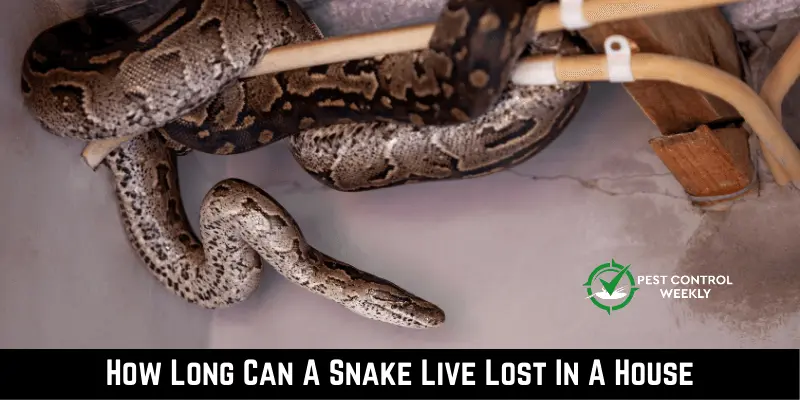You’ve just discovered that a snake has been living in your house for some time, but it’s nowhere to be seen now. You might be wondering how long a snake can survive if it becomes lost inside of a house.
How long a snake can survive in a house depends on its species, availability of food, temperature, humidity, and hiding locations. Some snake species can survive indoors longer than others.
This article will discuss factors that affect a snake’s survival in a house, typical varieties of snakes discovered in houses, and ways to find a lost snake and avoid repeat invasions.
Types Of Snakes Found In Homes
According to R Soc Open Sci following are types of snakes found in homes :
Non-Venomous Snakes
Pythons
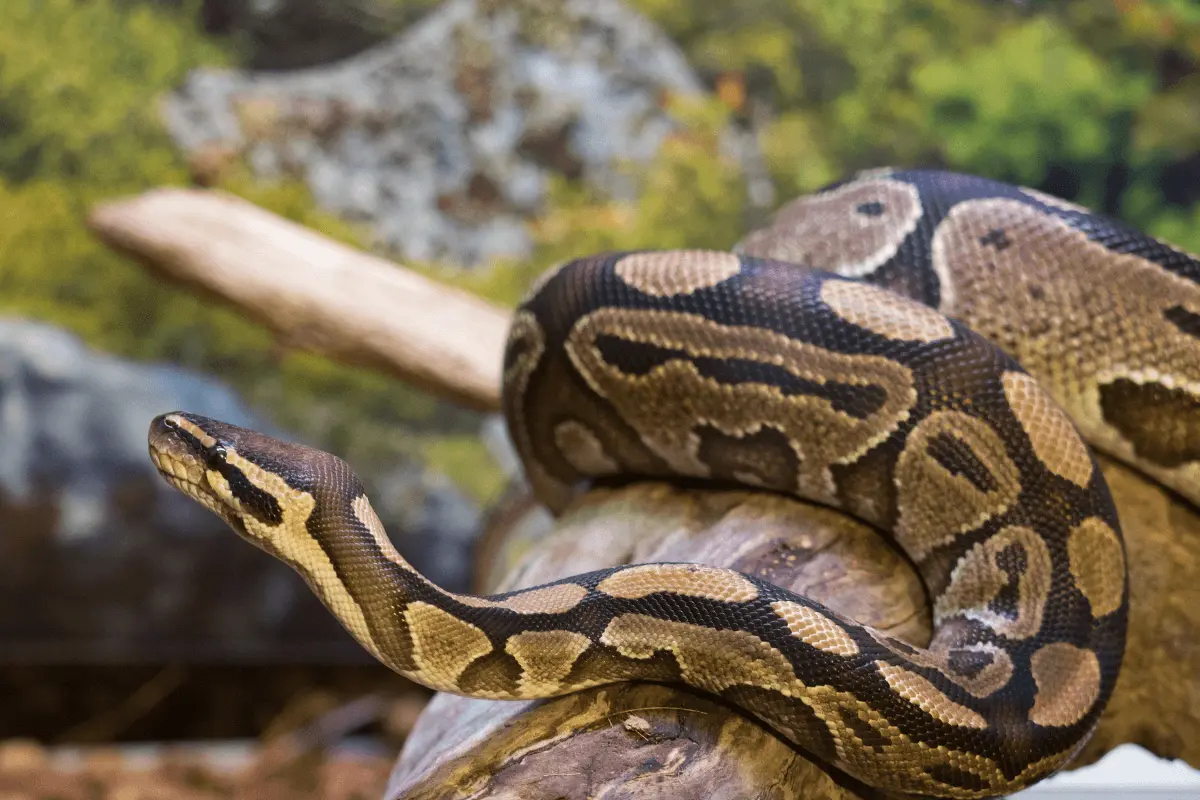
African, Asian, and Australian pythons are non-poisonous. They ambush victims by hiding in dense undergrowth and striking. The sharp, backward-curved teeth in four rows on the top jaw and two rows on the lower jaw hold prey as the body is slowly compressed.
The giant snakes are from this family. Reticulated pythons may reach 30 feet. Many animals have sophisticated camouflage and heat-sensing pits on their faces, like poisonous snakes, to find warm-blooded food.
Smaller pythons eat rodents, lizards, and birds; larger ones devour pigs, antelope, and monkeys. Burmese pythons, popular exotic pets, escaped or were released into the Florida Everglades in the 1990s, decimating numerous indigenous species.
Boas
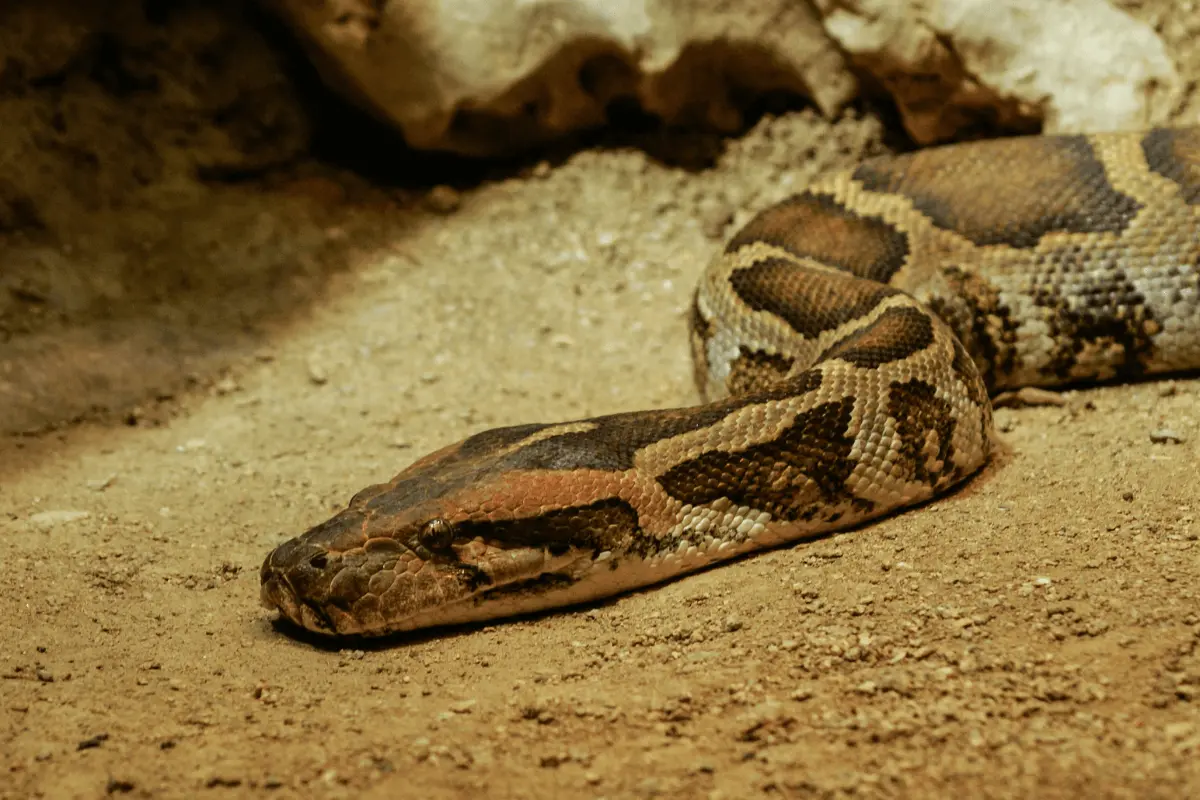
South America, Africa, and southern Asia are home to the boa family of giant tropical snakes. All 49 members of this family kill prey via constriction, although the boa constrictor and green anaconda are the most famous.
Their coils suffocate the victim. They prefer to ambush victims by sitting and waiting. They eat rats, bats, monkeys, pigs, and deer. The jaws can expand wide enough to swallow an animal. Food digestion takes several days. Baby boas average 22 cm. Some mature boas can reach 18 feet. However, boas average 5–7 feet.
Kingsnake
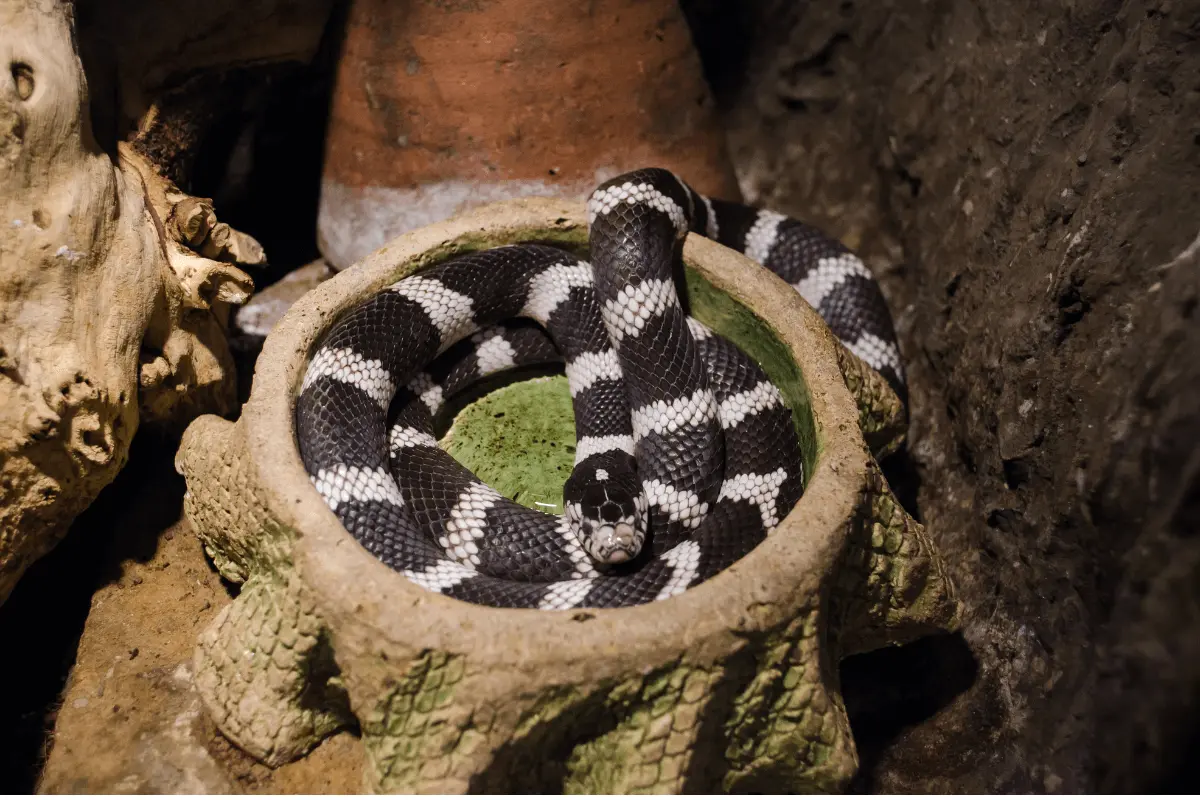
Kingsnakes inhabit various habitats in North America, including river valleys, woods, fields, hillsides, rocky outcrops, and pine forests, making them one of the continent’s most widespread snake species. They have black rings or bands on their bodies, but vary in color and pattern, making identification challenging.
It’s easy to confuse some of these species with the deadly coral snake. Kingsnakes consume rattlesnakes, copperheads, and cottonmouths. Toxin resistance helps them survive these difficult interactions. They eat lizards, rodents, birds, and eggs.
Indigo Snakes
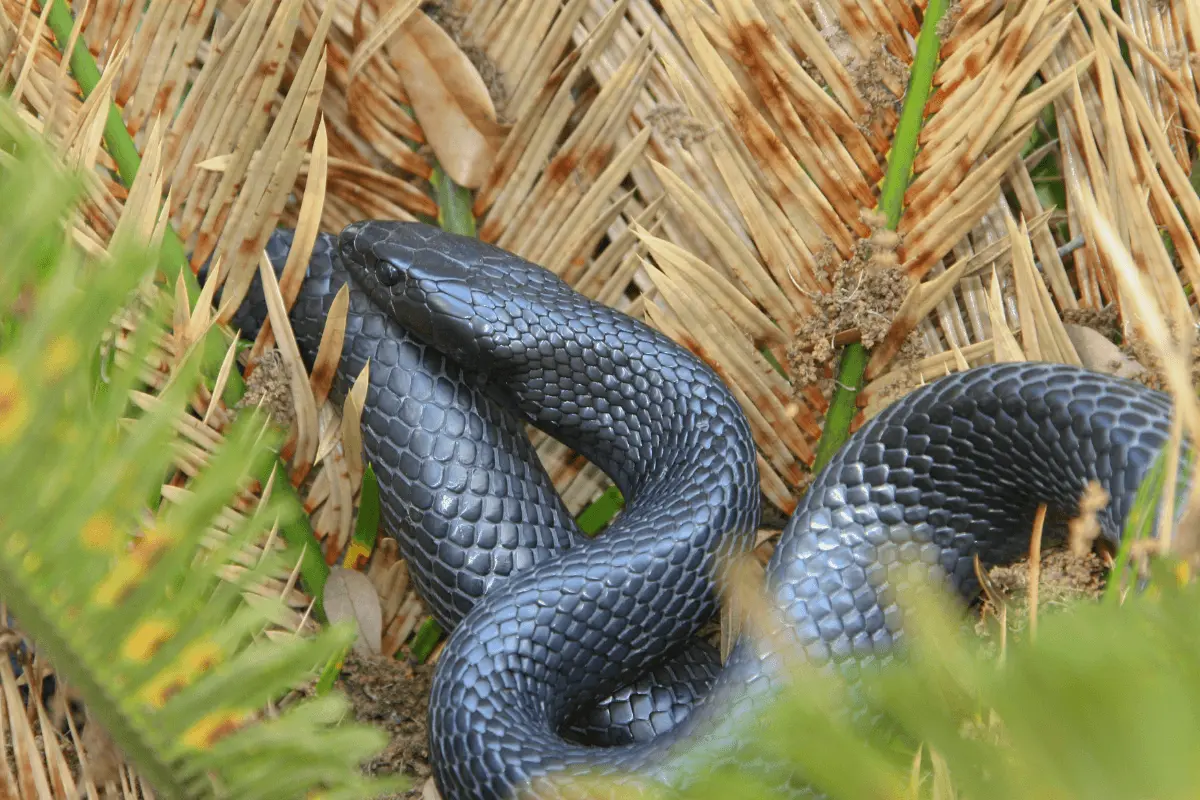
Indigo snakes live in the southeastern US, Central America, and South America. Scale color makes identification clear. Eastern indigo snakes are the most well-known of five kinds. It may be North America’s longest snake, reaching 9.2 feet long.
Due to habitat loss, accidents, and hunting, eastern indigo has declined in scrubs, hardwood or flatwood woods, grasslands, coastal dunes, and freshwater marshes and ponds. It eats tiny birds, eggs, rodents, turtles, and lizards.
Rat Snakes
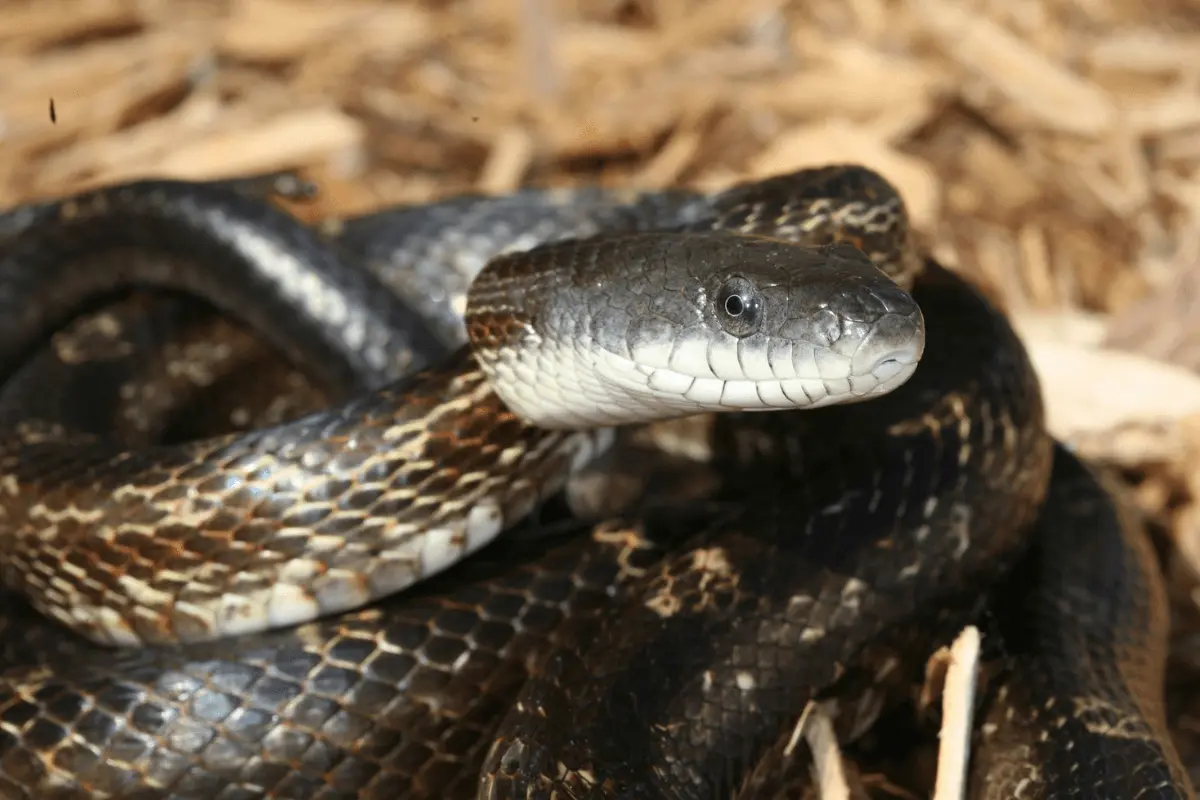
The rat snake is a member of a genus of medium-to-large, constriction-based snakes distributed throughout. The most well-known rat snakes in North America are the eastern rat snake, the Texas rat snake, and the yellow rat snake. They get most of their nutrition from rodents, as their name implies.
When threatened, they vibrate their tail to imitate rattlesnakes. However, despite their size, rat snakes are generally believed to be rather safe for humans. Certain members of this group are quite tame. The corn snake, which may grow six feet in length, is a common pet and one of the largest snakes available.
Hognose Snakes
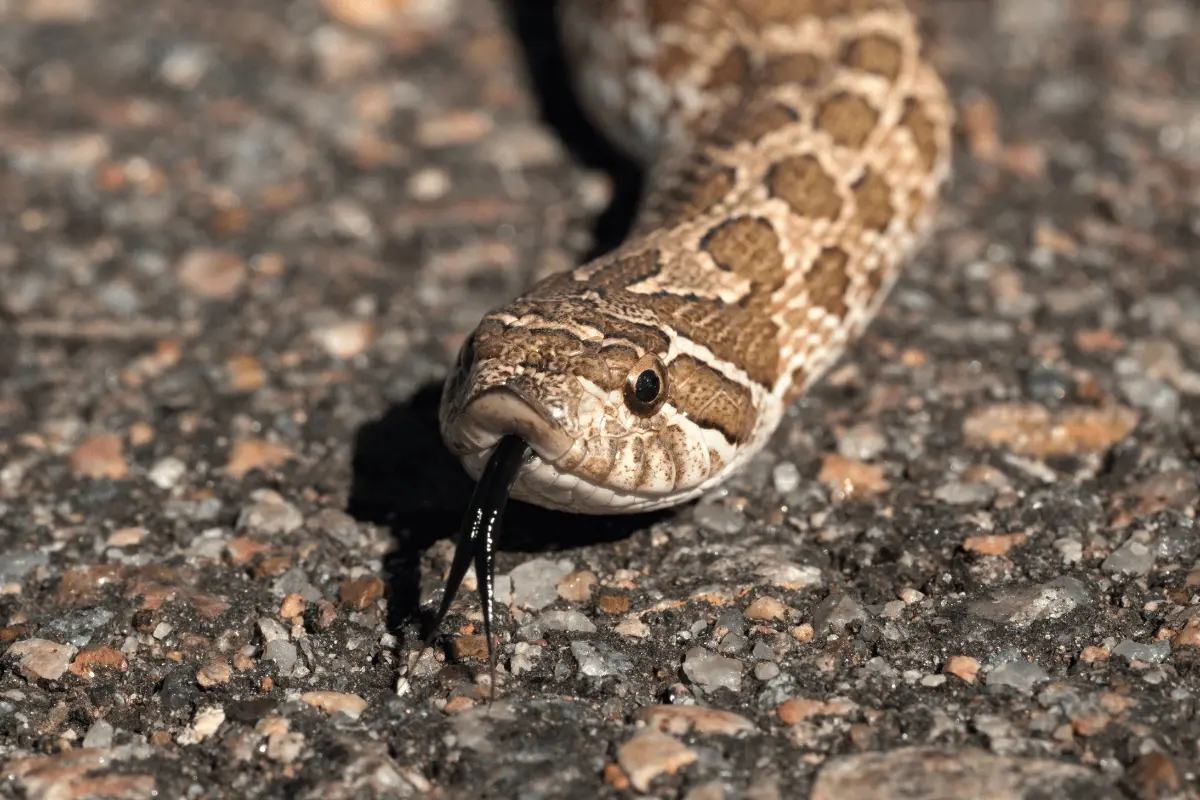
The hognose’s pointed and upturned snout permits it to dig in loose soil in sandy or semi-arid areas in North and South America. The eastern hognose eats toads and lizards.
Hognoses can be tan, black, brown, grey, olive, orange, or red. Hognoses may head-butt without biting when threatened. It may also turn over and pretend to be dead with its tongue out by emitting a foul-smelling fluid that resembles the fluid of dead animals. The eastern hognose’s poisonous chemical may hurt toads but is not venomous to people.
Racers
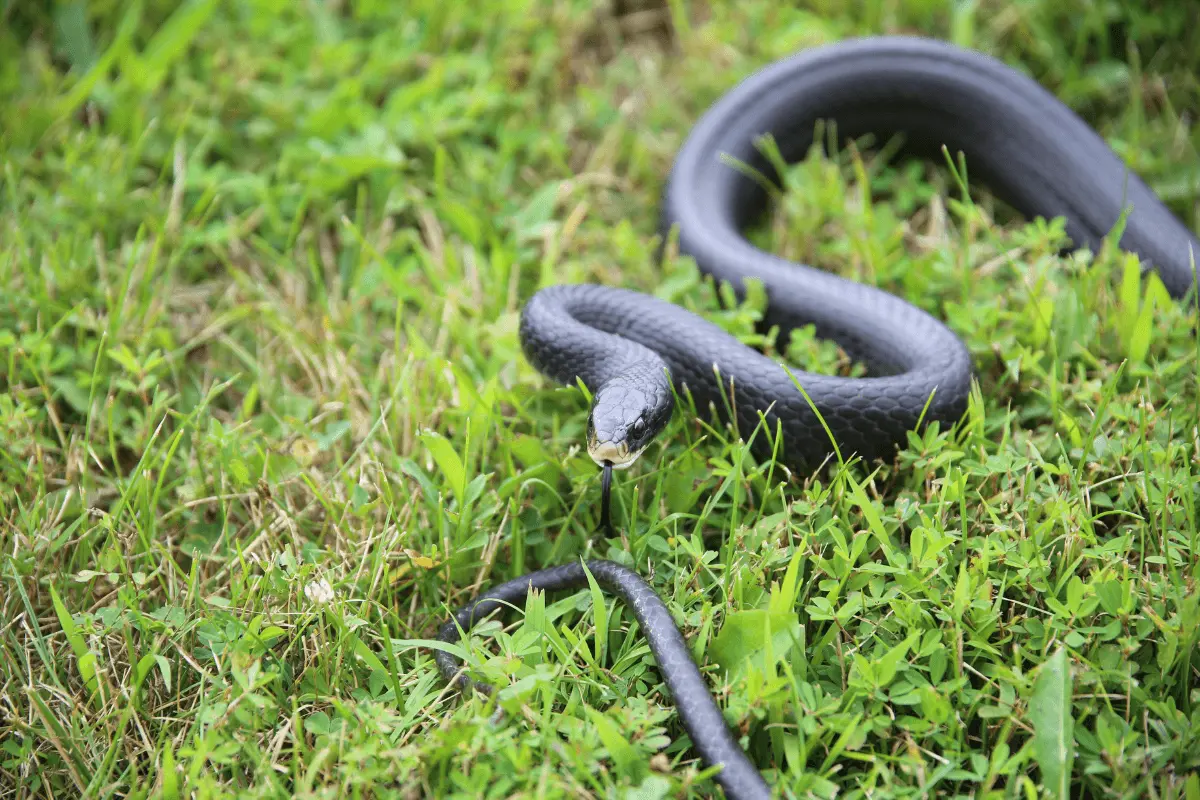
Racer snakes are varied across tropical and temperate America. The eastern racer is the most common, preferring meadows, marshes, and even suburbia in the US. It has a long, slender body with a dark back and paler belly; the blue, tan, and black racer subspecies are called after their body colors. Most adults are two to four feet long, although giant females might be five feet or more.
Racers can refer to their speed and agility when they recognize a predator. They can also easily climb trees to steal bird eggs and hatchlings. Most prey is consumed whole. Rodents, lizards, amphibians, and other snakes dominate the diet.
Gopher Snakes
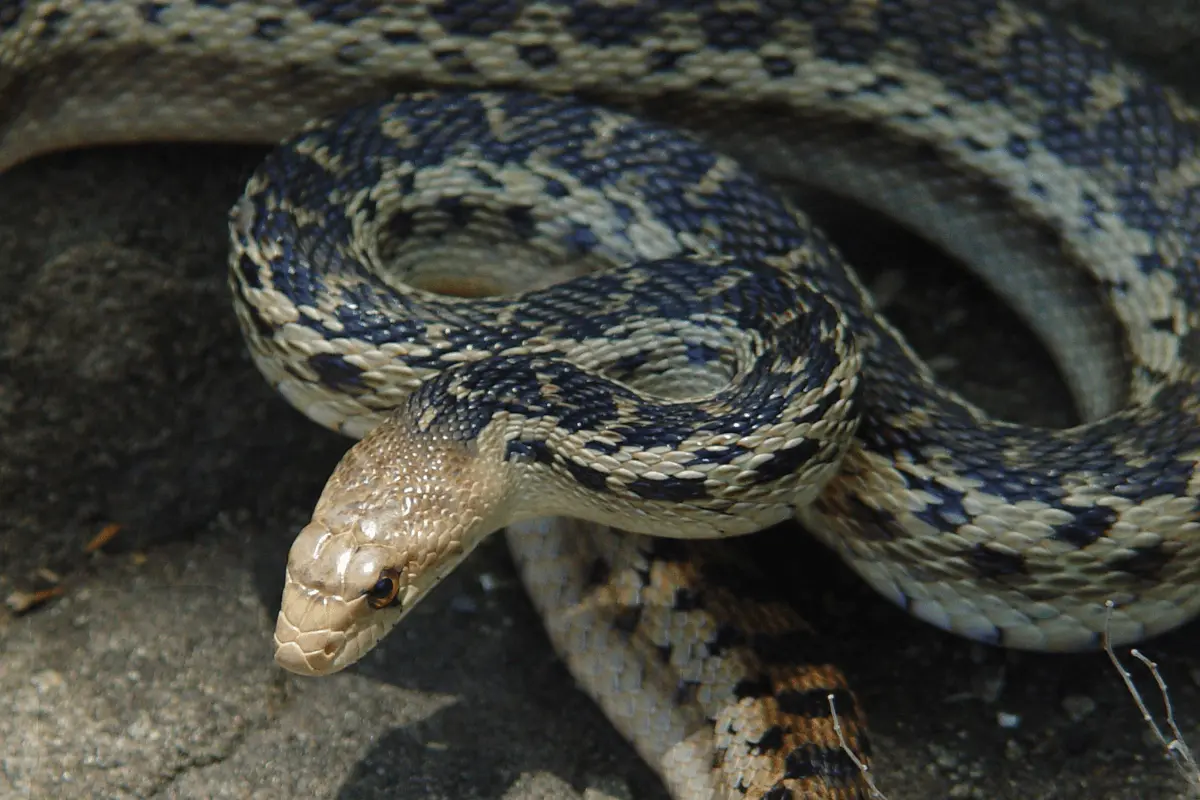
The pine snake, or bullsnake, is a genus of seven non-poisonous snakes that live in woods, deserts, grasslands, shrublands, agricultural areas, and rocky bluffs in North America. Many gopher snakes are three to eight feet long. They have yellow or light bodies with dark brown or black markings on the top and sides to identify them.
Gopher snakes hiss when threatened. To deceive predators, it curls up and rattles its tail. These snakes are harmless. Gopher snakes eat rodents, birds, eggs, lizards, and gophers by restricting their lungs.
Green Snakes
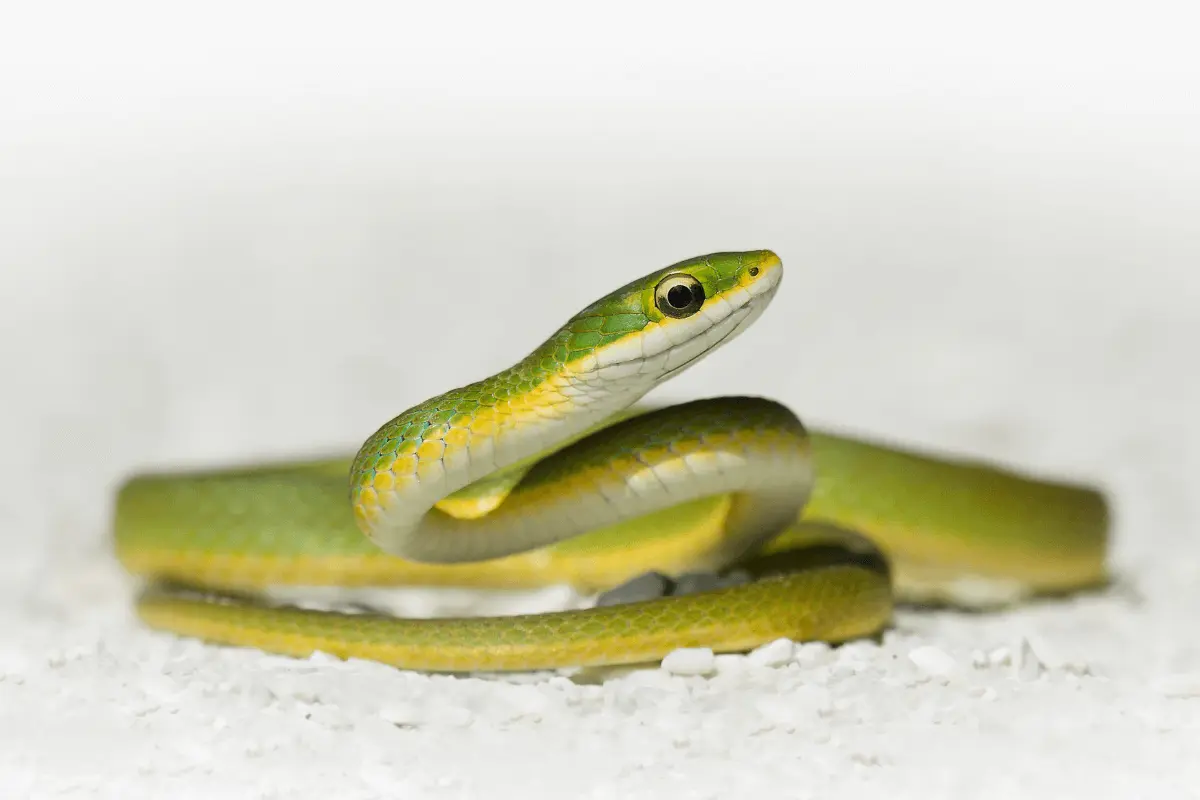
The common non-venomous and non-poisonous green snake lives in marshes, meadows, and woodlands from the US to Mexico. It has two species: the smooth green snake and the rough green snake. As the name suggests, the rear scales distinguish them. The rough green snake has keeled scales with a body-long ridge, whereas the smooth green snake has smoother scales.
This slender, sinewy snake grows between one and four feet and is harmless and bland. Its glowing green skin camouflages it from predators. Despite emitting a foul-smelling smell, they would rather run than fight if threatened. Green snakes hunt insects and spiders using ground vibrations.
Venomous Snakes
Rattlesnakes
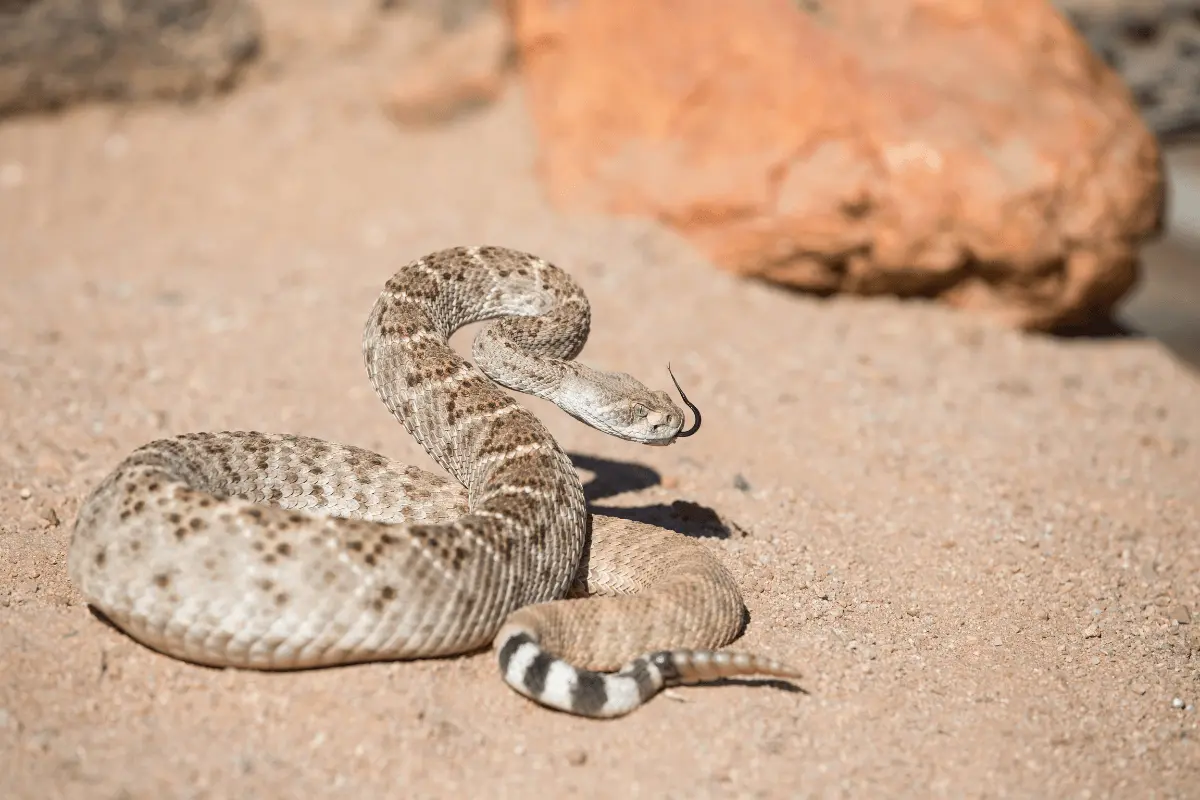
The United States is home to several kinds of rattlesnakes, the most giant venomous snakes in the world. One-third or more of their body length may be struck fast and precisely from any posture, whether coiled or spread out.
When rattlesnakes feel threatened, they may employ their rattles as a warning signal; however, this is not always the case. You may often see them basking in the sun on logs, boulders, or open ground. Mountainous regions, grasslands, deserts, and even coastal areas are all regular stops for rattlesnakes. Treatment of escalating envenomation symptoms is advised with antivenom.
Cottonmouths
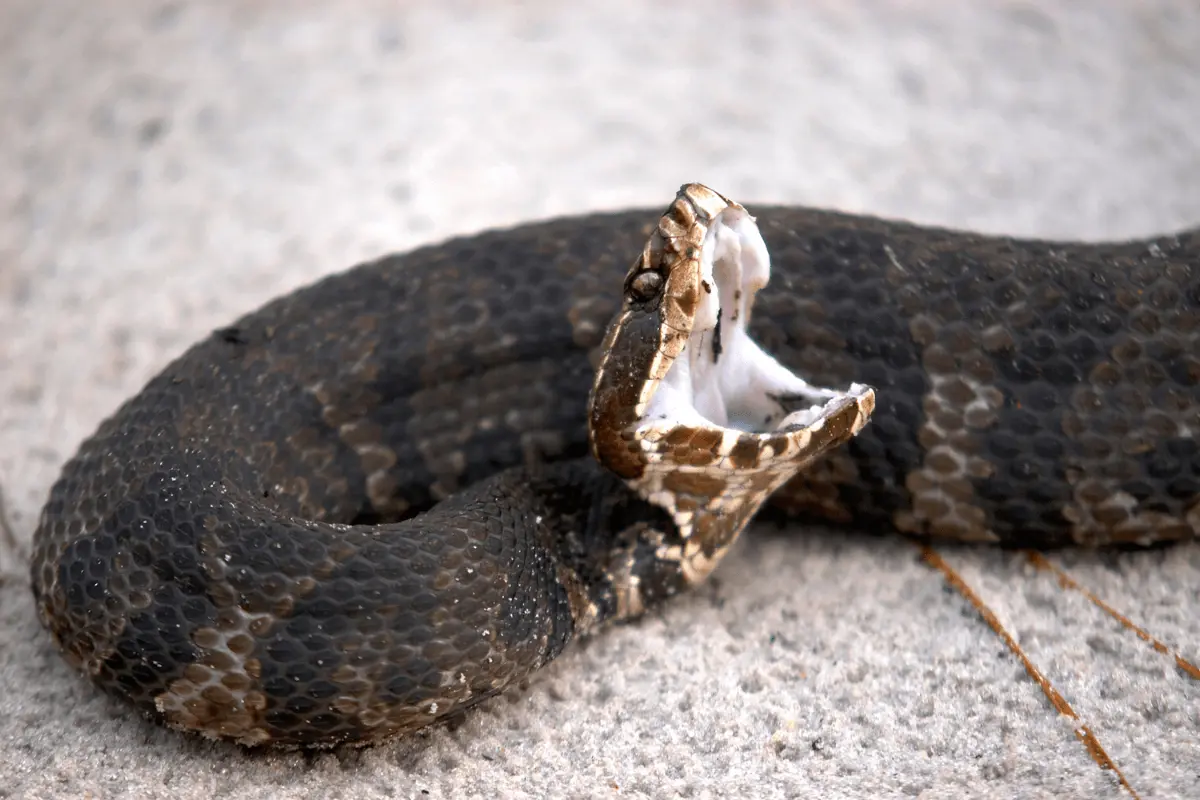
Cottonmouths are most common in the US. They reach an average length of 50–55 inches as adults. The skin of an adult snake is dark tan, brown, or almost black, and it has hazy crossbands and is either black or dark brown. Young individuals have a bright, cross-banded pattern that might be brown or orange, and they have a yellow tail. Cottonmouths may typically be found in or near bodies of water.
Copperheads
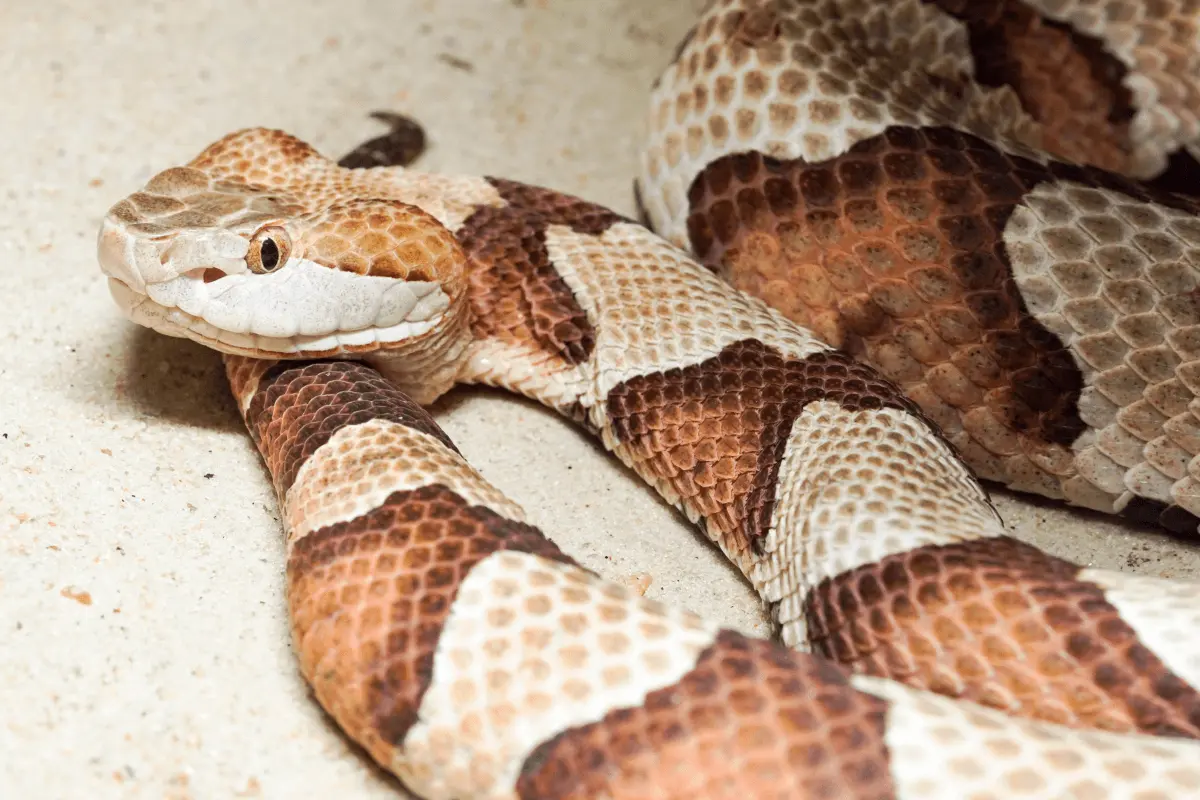
Copperheads can be anything from a rusty red to a rich brown. The pattern of colors on their bodies often forms an hourglass. Between each of their eyes and their nostrils is a deep hollow on their face. Copperheads like to live in or near moist environments, such as woods, rocks, swamps, or rivers. Most individuals measure between 18 and 36 inches in height. They are not often hostile but defend themselves with violence if threatened, approached, or dealt with.
Factors Affecting a Snake’s Lifespan In a House
According to J Anim Sci, several factors influence the lifespan of a snake in a home setting. The vitality and lifespan of these scaly creatures depend critically on the accessibility of food, the climatic conditions, and the provision of secure refuge.
Food Availability
The quality and quantity of food available to snakes in captivity is a significant factor in influencing their well-being and lifespan. Maintaining a diet that is consistent and suitable for the species is essential for healthy growth, development, and vitality. If a snake at home doesn’t get enough to eat, its immune system might weaken and become more prone to infections. This will shorten its lifetime.
Temperature And Humidity
The environment has a significant effect on a snake’s health and lifespan. The reptile’s metabolic and shedding processes depend on the perfect balance of temperature and humidity within its surroundings. Alterations to the snake’s microclimate can shorten its lifespan by causing stress, disease, or trouble shedding.
Safety And Hiding Spots
The health and happiness of a snake in the home depend on its having access to a safe space with plenty of places to hide. Snakes want to avoid conflict whenever possible, and the availability of hiding places helps them do just that. A stress-free environment that fosters the snake’s natural habits is conducive to a long and healthy existence.
How Snakes Enter Homes?
Snakes enter the home in several ways, including:
- Snakes can enter our homes through cracks and gaps because they can navigate the complex underground network of drains and pipes.
- Astute contortionists, snakes find even the tiniest openings to squeeze through, such as those found under doors or in weakened walls.
- Snakes enter homes through open windows or high entryways by climbing trees or other vertical surfaces.
- Snakes may get inside your home through ventilation shafts using the ductwork and vents to their advantage.
- Flowers and plants attract cold-blooded visitors closer to human buildings, where they might find new entryways.
- Snakes may sneak into a home through an open garage door or shed door, so homeowners need to close these entries after using them.
Signs Of A Snake In Your Home
If you suspect a sneaky snake in your home, don’t panic! We got some tips to help ya spot ’em and deal with the slithery intruder. So, let’s dive into the snakey world and uncover their mysterious ways:
- Snakes are like fashionistas, constantly changing their “outfit” as they grow. If you find snake skin at your place, it might be time to roll out the red carpet for your unexpected guest.
- Some snakes can be drama queens, releasing a funky musk when they’re freakin’ out. If your home smells like a high school locker room, you might have a snake hiding somewhere.
- Got dusty corners or dirty floors? Watch for wavy lines or trails that resemble a snake dancing the cha-cha in your house.
- Snake droppings are long, dark, and chalky and might contain leftovers from their latest meal. If you find mysterious droppings, you might just have a snake tenant!
- Snakes are great at hide ‘n’ seek, so check under furniture, cupboards, or wall crevices. You might spot one having a snooze.
- If you hear strange rustling, hissing, or slithering sounds, it could be a snake party going on behind the scenes.
- Your pets might sense a snake before you do, so if they’re acting weird or barking at nothing, it’s time to investigate.
- A snake could be the culprit if your smaller pets go missing or get hurt without any explanation.
Common Snake-Hiding Spots In A House
In general, snakes will look for places to hide that are secluded, dark, and quiet, as well as places that offer some degree of protection from potential dangers. The following are some of the most typical places in a home where snakes might be found hiding:
- Behind furniture
- Under furniture
- Cabinets and drawers
- Closets
- Appliances
- Heating and cooling vents
- Basements and crawl spaces
- Attics
- Wall cavities
- Boxes and clutter
Dangers Of A Snake Living In Your Home
The dangers of having a snake as an inhabitant in one’s home cause fear and unease. Envenomation is the biggest threat to these reptiles. Many ophidian species have poisonous bites that can harm humans. Their deadly venom spreads through the victim’s circulatory system, causing severe pain, swelling, and even death. Thus, an encounter with a poisonous snake might be fatal.
Their serpentine bodies allow them to hide or hunt invisibly. Household members may worry about a surprise ambush due to this hiding behavior. Snakes in the house can also damage the ecology by feeding on other, more benign creatures essential to ecological balance. They may destroy rodent populations, causing pest outbreaks or zoonotic disease propagation.
How To Prevent Snakes From Entering Your Home?
Here are effective methods to protect your home from these nefarious intruders.
- Zen gardening: Create a space that snakes can’t live in by keeping your garden in perfect order. Keep the grass manicured and remove any bushes, leaves, or debris that might hide a snake. A clutter-free outdoor environment denies these cunning critters refuge.
- The Barrier Principle: Build a strong barrier around your home to keep creeping marauders out. This defense includes fine mesh screens, snake-proof fences, and strong doors. Maintain your castle by inspecting and fixing breaches.
- Scents and Sensibility: Use scented deterrents to keep snakes out. Clove oil, cinnamon, and eucalyptus are natural repellents that confuse and deter these smell-sensitive animals.
- Illuminate Shadows: Remove snake-attracting shadows from your property. Motion-activated outdoor lights can deter these nocturnal critters.
- Reinforce Structural Defenses: Check your home’s structure for holes or cracks that may attract a slithering intruder. Seal foundation, window, and door cracks. This careful upkeep protects your home.
- Rodent Retaliation: Eliminate rodents from your house with strict pest management. Eliminating their main food source deters snakes from entering your domain.
- Nature’s Wardens: Promote snake predators like birds and mammals. Nesting boxes, bird feeders, and habitat improvements can attract these wonderful guards to your area, deterring serpentine invaders.
Will A Snake Leave A House On Its Own?
Yes, if you give the snake a chance, it will leave the premises on its own to find a better environment for survival. A snake in a home is unsettling. However, these cold-blooded species enter human homes accidentally and seek a safe and welcoming habitat.
Environmental signals like prey or refuge may mislead an unwanted snake. Most snakes will leave, drawn by the call of the wild and the desire to return home. In the rare case that a snake survives in residence, professional help is needed to safely and humanely remove the animal.
Will A Snake Come Back Into My House?
Snakes returning to one’s home are unlikely, but the possibility is unsettling. Ectothermic snakes need warmth, nutrition, and isolation in their native settings. Although a house may temporarily relieve them, these reptiles instinctively return to their native environments.
However, some situations may cause serpentine household presence to return. Snakes may return if they find food or shelter there. Thus, homeowners should eliminate prey, fix holes, and declutter to address these underlying attractions. Frequent invasions require a wildlife specialist. Their expertise will provide a fair and compassionate outcome, allowing people and snakes to cohabit.
Final Thoughts
The ability of a snake to live within a home is dependent on several factors, including the species, the availability of food, the temperature and humidity, and hiding places. If you encounter a snake in your house and are aware of these elements and take the necessary precautions, you will be able to handle the issue more effectively. You can locate the missing snake and avoid more invasions by utilizing the advice given in this article.
FAQs
References
Durso AM, Bolon I, Kleinhesselink AR, Mondardini MR, Fernandez-Marquez JL, Gutsche-Jones F, Gwilliams C, Tanner M, Smith CE, Wüster W, Grey F, Ruiz de Castañeda R. Crowdsourcing snake identification with online communities of professional herpetologists and avocational snake enthusiasts. R Soc Open Sci. 2021 Jan 13;8(1):201273. doi: 10.1098/rsos.201273. PMID: 33614073; PMCID: PMC7890515.
Mendes GF, Stuginski DR, Loibel SMC, Morais-Zani K, da Rocha MMT, Fernandes W, Sant’Anna SS, Grego KF. Factors that can influence the survival rates of coral snakes (Micrurus corallinus) for antivenom production. J Anim Sci. 2019 Feb 1;97(2):972-980. doi: 10.1093/jas/sky467. PMID: 30541079; PMCID: PMC6358253.
